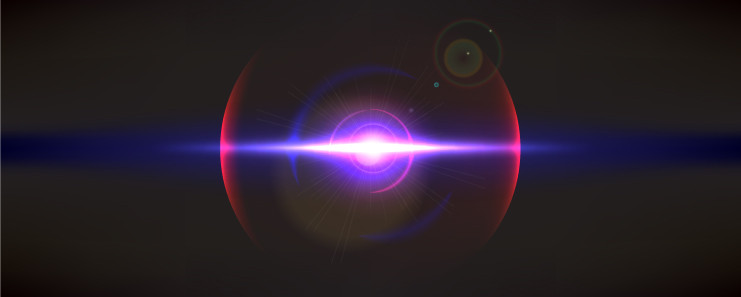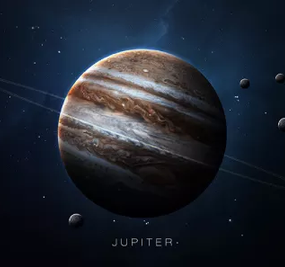Amazing facts about India
The Big Bang Theory that originated in 1927 is a scientific effort to explain how our universe came into existence. It believes that the universe started as an infinitely small, hot, and dense ‘something’ which expanded rapidly from the singularity with a big explosion or ‘Big Bang’ from which formed the galaxies, stars, and the rest of the universe.
However, the science in the Vedas explained these concepts since millennia. The Rig Veda, written thousands of years ago, mentions Hiranyagarbha and the Brahmanda Visphotak which talks about a similar theory.
The Vedic rishis were seer scientists of their times. There were over 400 of them who lived before 3000 BCE. They have questioned and interacted with nature and recorded their observations which have come down to us as the four Vedas, the primary one being the Rig Veda. Thus the science in the Vedas was born from intuition, inquisitiveness, intelligence, and a deep reverence for nature.
An eminent seer, Rishi Prajapathi Parameshti, also in his times seems to have asked a similar question: how did this universe and creation come to be?
The Rig Veda is divided into 10 mandalas. In the 10th mandala, a hymn known as the Nasadiya Sukta gives the detailed scientific description of our Creation. This records Rishi Parameshti’s process of questioning and understanding this process of creation. The Nasadiya Sukta starts with: “How was this universe created? Who created it?”
Was He within the Creation or Was He outside? Was He also created as a part of the process of creation? From what was this Universe Created?
Some of the provoking description of the process of Creation include stanzas written eloquently. Indeed the science written in the Vedas was as profound as it was poetic.
“There was neither Aught nor Naught…
No air nor sky
What covered all? Where rested all?
A void in wrapth…
Who knows … from whence this vast creation arose?
No Gods had then been born
Who then can ever the truth disclose?
Whence sprang the world
Whether framed by hand divine or no,
Lord in heaven alone can tell
If even He can show.”

This Sukta then goes on to explain the concept of Creation:
“That alone, by its own power breathed without air.
Besides or beyond That one, there was nothing.
Darkness was further shrouded by darkness
which appeared to flow all around
That One, came to be, even from this emptiness,
by the power of its own intent
Within That One, appeared the first seed of mind in which arose
an impulse of diffusion and concentration power.”
At this point arose the manifested Universe from that unmanifested One. Seers declared this fundamental position from reasoned meditation in their minds.
“These rays of concentrated power spread on all sides in the manifested mass
slanting below as well as up and in the sides everywhere.
From these rays of power arose the seeds of mind and they became greater.
The power of the seeds of mind remained concentrated in them
while the pressure of concussion remained on the other side.”
Thus arose the difference between the living and non-living. The evolution of minds further took place. The science in the Vedas, too, grew deeper.
“Nobody can describe the process of creation
Gods cannot describe the process of creation
because they also did not see the process of creation,
They came into existence only after the visible world had happened.
The theory was born millennia ago
According to the Nasadiya Sukta, Hiranya means golden and Garbha means womb. This golden-hued cosmic womb is said to be an indescribable power and energy center which is in oscillation, equating it to be a type of breathing activity, constantly pulsating.
In Rig Veda hymns 1.32 and 1.33, Rishi Hiranyastupa Angirasa describes a battle between two opposing forces inside the cosmic womb as a battle between indra ‘ the divine mind’ and vritra, or ‘the clouds sticking together.’
Vritra– the resistive force holds back and opposes the seeds of mind or the externally pushing force of indra, from spreading and acting.
Isn’t our cultural heritage fascinating? Equally intriguing is our tradition of healing and health. Thousands of years ago, our ancient sages unlocked techniques and wisdom to maintain holistic health. Know more about these secrets at The Art of Living Meditation and Breath Program.
Discover India’s spiritual heritage and learn about the mind & breath. I’d like to know more>>
www.artofliving.org/in-en/culture/amazing-india/when-vedas-sang-of-the-b…
This makes the Hiranyagarbha, both, pulsate and stay still, because space and concept of time do not exist here.
At a particular moment, the externally pushing force, indra, overcomes the withholding force vritra, causing the Hiranyagarbha to explode. This is known as Brahmanda Vishphotak or what modern science now knows as the Big Bang Theory. A theory that the ancient Indian scholars had mentioned many centuries before the western world thought of it.
The manifestation process
The process of manifestation of matter and the Universe has been termed in the texts as Panchikaranam. Panch means five and karanam denotes acting. The term Panchikaranam was given to denote the interplay between the five. What were the five?
What is this Panchikaranam?
The five represent the PanchaBhuta or primordial elements, which lay ensconced in the neutral waters of the Hiranyagarbha in the form of their properties, Guna, characteristics alone.
The five primordial elements are:
* Akash – space/ether
* Vayu – air
* Tejas – fire
* Apah – water
* Prithvi – earth
These five elements undergo a churning process described as the process of Panchikaranam, where the five interact and it is from this that the Universe in all its size, space and matter manifests.
During Panchikaranama, each of the five primordial elements (bhuta), transform into a state such that they retain 50 percent of their own unique character or properties and the remaining 50 percent is a mix of the properties of the other four bhuta i.e the remaining 50 percent is a combination of 1/4th parts of the properties of each of the other four primordial elements or bhuta.
Hence each of the five bhuta has the properties of the other four bhutas to the extent of 12.5 percent each. It is when the five primordial elements are in their pure state, the five primordial elements are the PanchaBhuta.
After Panchikaranam, the state of the five PanchaBhuta, becomes bhautika. Thus in the evolved Universe as it is now, we can never find the original, five PanchaBhuta. We only find the transformed bhuta.
This process of Panchikaranam is a continuous process, right through the life of this Universe and also before and after the life of the Universe. So, it is an eternal process.

What the Puranas said about Adishesha (and the Black Hole)
Sir Roger Penrose, the eminent British mathematician and relativist who is known for his work on the Black Holes, made a revelation in his statement: “The Big Bang Theory in a certain sense is not the beginning. The Big Final Stage may also be the initial stage when there is only radiation left and the universe loses track of its scale.”
While to many this is a new concept, the Puranas had already mentioned it in the form of Adishesha, the snake bed of Lord Narayana. In Hinduism, Shesha also known as Adishesha, is the nagaraja or king of all nagas and one of the primal beings of creation.
The earlier cycle of creation after its lifespan, contracts itself back into the Hiranyagarbha. The remnant is known as Adisesha. Adi means the original or the beginning and shesha means remnants. Adishesha and Narayana, thus, are symbolic of the state of the cosmos between any two successive endless cycles of creation.
The endlessness of these cycles have been brought forth through the name Anantha Shesha. This Anantha and the symbol of the coiled serpent surprisingly is similar to the symbol of infinity.















